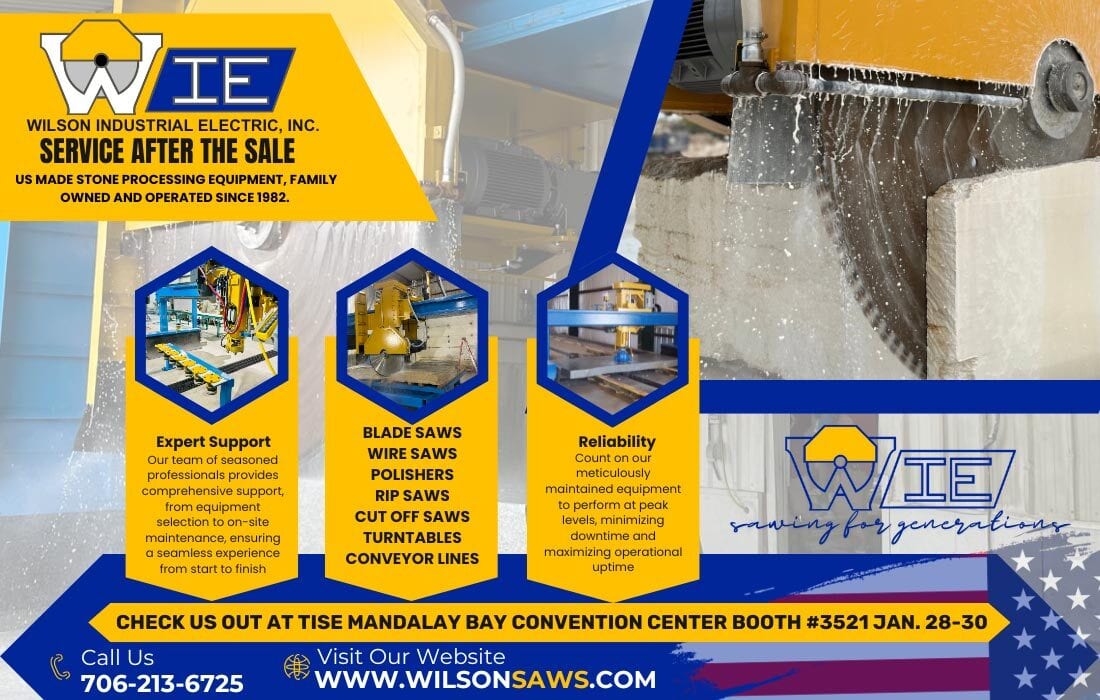
hatchakorn Srisook / iStock / Getty Images Plus / via Getty Images
The Alignment Problem: Why Stone Fabrication Businesses Struggle to Scale
Subhead
Author
When Eric Tryon sold his stone fabrication business after nearly 20 years, he watched from the sidelines as the private equity group that bought it systematically dismantled what he'd built. The Ivy League-educated buyers had impressive financial credentials, but they made a critical error that Tryon now sees plaguing fabricators across the industry: they lost alignment between company objectives and individual employee goals.
"They thought they were reducing costs. You know what they did? They reduced engagement," said Tryon. "They made that individual frontliner start making decisions that were selfish, not necessarily in the company's best interest. And that's misalignment."
This misalignment issue has become the cornerstone of Tryon's consulting work with stone fabrication companies. Speaking at the Stone Industry Education event in Nashville, TN, on September 11, 2025, he outlined how fabricators inadvertently create conflicts between their business goals and employee incentives, particularly around compensation structures.
The traditional hourly wage model exemplifies this problem. When shop employees want to earn more money, their only option is working overtime — directly increasing the company's expenses and creating an inherent conflict of interest.
"Give me five metrics in the stone fab business, I'll tell you exactly what that company's all about," said Tryon. "I'll tell you where the strengths are, and I'll tell you where their weaknesses are, and where their opportunities are. Because there are so many moving parts, people get distracted."
The challenge intensifies as companies grow. Tryon observes a predictable pattern: businesses operate smoothly as mom-and-pop shops managing $1-3 million in revenue. At $3-7 million, cracks begin to show as owners must rely more heavily on others. But once companies surpass $7-10 million, the wheels often fall off entirely — the individual entrepreneur can no longer manage everything personally, and without proper systems and alignment, chaos ensues.
Industry trends compound these structural problems. Rising material costs, increasing payroll expenses and insurance hikes squeeze margins. While top fabricators achieve 10% EBITDA or higher, the industry standard hovers around 5% — a razor-thin margin that leaves little room for error when alignment breaks down.
The quality of available workers presents another challenge. Finding skilled employees has become increasingly difficult, making it even more critical to engage and retain existing talent through proper alignment and clear performance metrics.
"At the end of the day, companies have to utilize the best ways possible, their human capital assets, their people, their employees, and they have to blend that with strategies and SOPs," said Tryon. "It's not about you, it's about having the best systems and communicating the right things and focusing on the right things."
Tryon's experience building his own company from scratch without industry experience, then watching its decline under new ownership, crystallized his understanding of what makes or breaks stone fabrication businesses. The same people in the same positions in the same market produced dramatically different results once alignment was lost.
His consulting work reveals these patterns repeating across the industry. Companies focus on top-line revenue rather than bottom-line profitability. They lack clear performance metrics. Departments operate in silos rather than as integrated teams. And perhaps most critically, frontline employees make daily decisions without understanding how their performance will be measured or what's expected of them.
The influx of younger entrepreneurs buying stone fabrication businesses — often from outside the industry — brings both opportunity and risk. These new owners frequently underestimate the complexity of the business, assuming their education or business acumen will translate directly to success in stone fabrication.
For Tryon, who now works primarily as a leadership coach and consultant, the solution requires a fundamental shift in how fabricators structure their operations and incentives. Success demands creating clarity about objectives, establishing systems that allow the business to scale and ensuring every employee's personal interests align with company goals.
The alternative, as Tryon witnessed firsthand with his former company, is watching years of careful building get dismantled "one brick at a time."
SHARE THIS
Rod Sigman CTC, CCTS, CSMTT is the business development leader for MAPEI Corporation’s UltraCare® line of products for the care and maintenance of tile and stone products. Sigman has a proven track-record of success in the flooring industry, with experience in both training and education, as well as all support functions pertaining to national sales accounts and distribution. He has served on the technical committees of the National Tile Contractors Association (NTCA) and the Natural Stone Institute (NSI). He has successfully completed the Ceramic Tile Consultant Course, is a Certified Ceramic Tile Specialist (CCTS) and is also a Concrete Slab Moisture Testing (CSMT) Technician. Further, he was recognized by the Marble Institute of America (now the Natural Stone Institute) as a significant influence for the stone industry.

